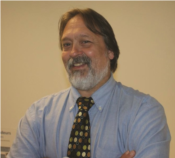Real pantry of humanity, the sea had already shared with us his fruits. But now his generosity extends to want us to discover its aquatic vegetables, algae.
Certainly, we know the leaves of seaweed used to wrap sushi. But algae is much more than that! This is actually a heterogeneous group, which includes hundreds of plants living in fresh or salt water. Some are microscopic - less than a millimeter -, others go up to hundreds of meters as in giant kelp.
Usually ranked edible seaweed by color: green, brown and red. The most common are commercially sea lettuce, sea hair, dulse (or dulse), Irish moss, beans or sea spaghetti, nori (used for sushi), wakame, hijiki, kelp and kelp.
In Quebec, coastal waters, unpolluted, natural resources are important algae. According to experts, the Estuary and Gulf of St. Lawrence are full of algae species.
Quebec, a sea algae?
The nutritional value of algae do not seem to be called into doubt. Containing vitamins B9 and K, effective for lowering high cholesterol and high blood pressure, algae are the same cancer. And to drink?
In Quebec, Merinov the innovation of aquaculture and fisheries of Quebec Centre, is particularly concerned with work on the production and information related to algae. Founded in 2010 by the Ministry of Agriculture, Fisheries and Food (MAPAQ), the Cégep de la Gaspésie et des Îles and the University of Quebec at Rimouski, this is a research center that contributes "to sustainable development of Quebec's fishing industry, aquaculture and enhancement of marine biomass while promoting the development of expertise in these sectors. »
Specifically, Karine Berger, project manager at Merinov in development of marine products, said the team "working on the algae has eight years of experience in the field. An Industrial Research Chair in colleges Research Council Natural Sciences and Engineering Research Canada (NSERC) for the development of macroalgae is also active since 2012, with the support of five partner companies. »
Without comparing China produces 11 million tons - 800 tons in Quebec for a dozen companies - Quebec exploitation of algae starts to grow. Market development of the human diet, nutraceuticals (food substances beneficial to health) and cosmeceuticals (biologics in the service of beauty) and those of composts and horticultural fertilizers based seaweed raises the interest. Karine Berger, the development of the seaweed industry going "by harvesting beached seaweed, the sustainable use of natural populations and the development of seaweed farming. »
Peasant sea
L'Acadien Stéphane Maddix Albert just started Kelp Lighthouse East. His company located in Cap-au-Renard, high Gaspé, the Ste-Anne-des-Monts, harvesting and markets five types of algae nori and wakame Atlantic dulse the Royal kombu and finally laminar.
Dressed in a suit diver and wearing his eternal red toque, Stéphane Albert spends his time in the water. At least, between late April and late June! That's the short period that lasts seaweed harvesting. "I harvest the algae that are clinging to rocks. »
Once harvested, its kelp or wakame are suspended in a dryer. They will spend 24 to 48 hours. Then comes the marketing. For now, its seaweed bags are distributed in nearly a dozen outlets. Marché du Vieux Port in Quebec City Jean Talon Market in Montreal, to the delights of the sea in Sainte-Anne-des-Monts or The Seed in Rouyn-Noranda, Seaweed Lighthouse East strives to provide ideas for cooking production. Of course in rice or soup, but in a puree, it's also delicious. Dulse, for example, can eat like potato chip. Its red color and its taste is somewhat reminiscent of bacon. To also taste in salads and quiche.
Why, when it was early twenties, interest in algae? By taste and environmentally friendly choice. Child in his Acadian New Brunswick, his plate was often filled with algae. As for the green choice is simple: "I taste, he says, produce healthy food, renewable and requires little oil. »
One already sees his company moved to a second stage by transforming algae as a condiment or chips, also like to be part of an awareness of the preservation of the St. Lawrence. Together with the shop Gardens Sea St-Andre-de-Kamouraska, Seaweed Is Lighthouse is part of a civic education campaign, "Sinks not home," which disseminates "information to better understand the oil issue "and pipeline projects in the river. You will also notice that the bags of the Gaspé company carry a label: "PRODUCT THREATENED by oil development in the St. Lawrence." History reminds us qu'algues and beluga lead the same struggle.
To learn more about algae:
http://www.varechphareest.com/
http://www.cuisineaz.com/recettes/recherche_v2.aspx?recherche=algue

These came sea vegetables
 ANDRÉ MAGNY / January 5, 2015
ANDRÉ MAGNY / January 5, 2015
Recent / evaluations
Granby restaurant
Restaurant Maison Wong
I ordered takeout yesterday for my family. Everything was delicious. Thanks ??
Evaluation added on November 17, 2025 by Collette
Coteau-du-Lac restaurant
Brochetterie Naxos
Food was delicious with generous portions at a resonable price. It is one of favourtie brunch place!
